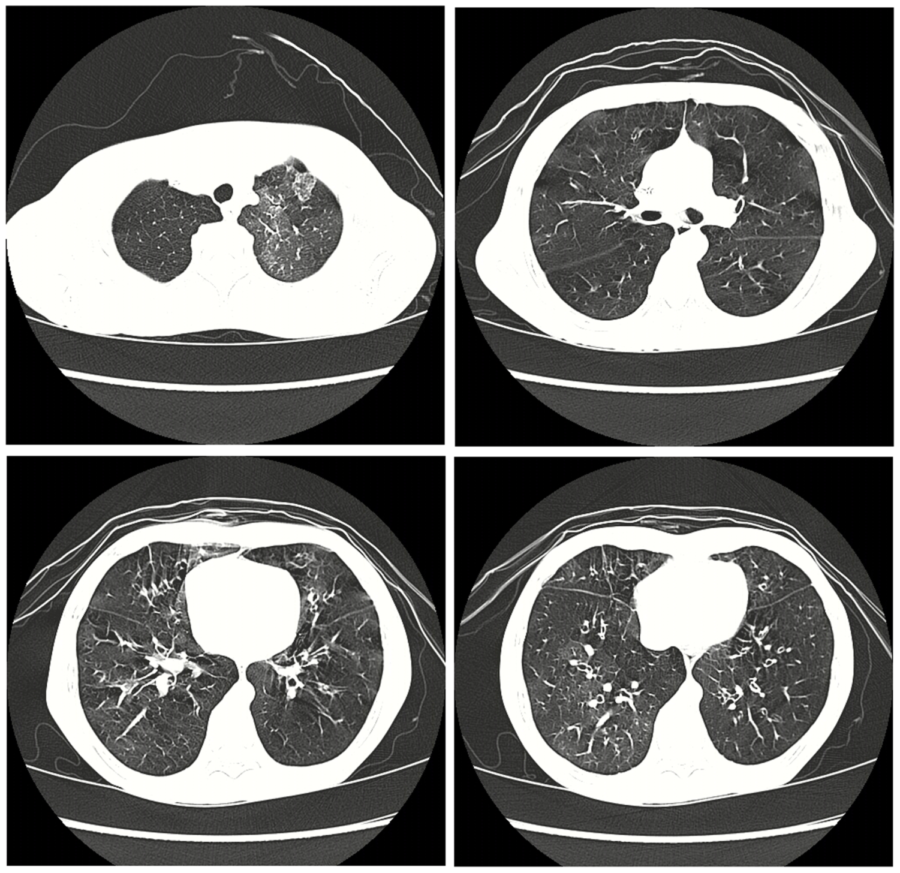The Underestimated Dangers of Vaping
CT scan showing a hospital patient with bronchiolitis obliterans. Xie B-Q, Wang W, Zhang W-Q, Guo X-H, Yang M-F, Wang L, et al. (2014) Ventilation/Perfusion Scintigraphy in Children with Post-Infectious Bronchiolitis Obliterans: A Pilot Study. PLoS ONE 9(5): e98381. https://doi.org/10.1371/journal.pone.0098381state
Piper Johnson, a Colorado teen, recently fought for her life because of a vaping-associated lung illness. Johnson stated in a People Magazine interview that, “it’s not worth the risk, and it’s not worth seeing your parents cry as you’re in a hospital bed.”
More startling yet are recent publications revealing that some people are dying from vaping, and for reasons having nothing to do with cancer.
In the past two years, the vaping industry has undergone a boom of popularity. A survey conducted by the US Food and Drug Association (FDA) indicated that e-cigarette use had more than doubled for teens between 2017 and 2018.
In addition, a federal survey showed that approximately 30% of high school students vape at least once every 30 days. E-cigarettes represent the most commonly used tobacco product among middle and high school students.
Vaping has now by far surpassed cigarette smoking in terms of frequency of use. According to the World Health Organization, cigarette smoking is actually now on the decline. The total number of smokers is currently estimated at one billion worldwide. This is not the case for vaping.
“I don’t think they care enough to quit. Nicotine is so addictive I think they’d rather just keep vaping instead of quitting,” said senior Acacia Ryska.
There are many reasons for the accelerated use of e-cigarettes. One especially influential motivation for vaping has been, and continues to be, the belief that vaping is much safer than cigarette smoking. This is often thought to be true because, unlike smoking, vaping does not involve the inhalation of smoke, which is known to contain carcinogens. However, less well known is the fact that vaping substances include a wide variety of cancer-causing chemicals.
Cheryl Petrossi, registered nurse for the Department of Corrections, confirmed that e-cigarette pods and cartridges also include carcinoids and “chemicals that can get stuck in your lungs.”
This point of view was shared by Kjersti Hedges, Air Academy High School’s nurse, who added that “other [health-related] issues” can also result.
In addition to the myth that vaping does not involve the cancer risk associated with smoking, vaping popularity has also resulted from the introduction of a variety of flavors, the increased use of vaping by adults and family members, the promotion of these products through social media, and the same addiction to nicotine that traditional cigarette smokers experience.
Teens have been putting their minds and bodies at risk when participating in the use of these devices. E-cigarettes contain heavy metals and many chemicals that have been linked to illnesses and death.
Nicotine harms the part of the brain that controls learning and decision making skills that can lead to mood disorders and other issues. Vaping can also cause inflammation in the lungs, increased risk of infection, and irreversible respiratory diseases including bronchiolitis obliterans (popcorn lung).
This sudden outbreak of teen e-cigerette users are worrying doctors and parents. Schools have been working to spread awareness and encourage teens to educate themselves about these not so well known dangers of vaping.

My name is Natalie and this is my first year writing for the Jetstream Journal. I'm pumped to write some articles and expand my writing skills. I have...













